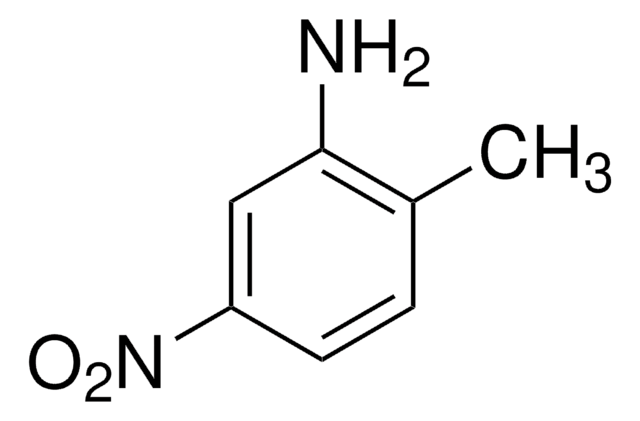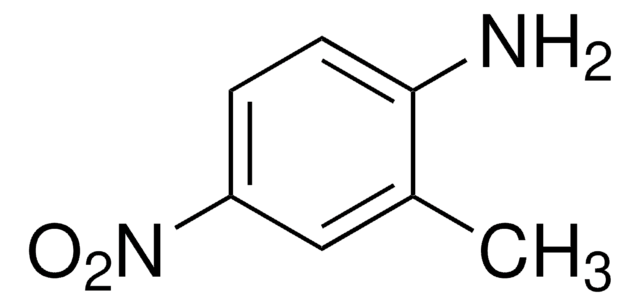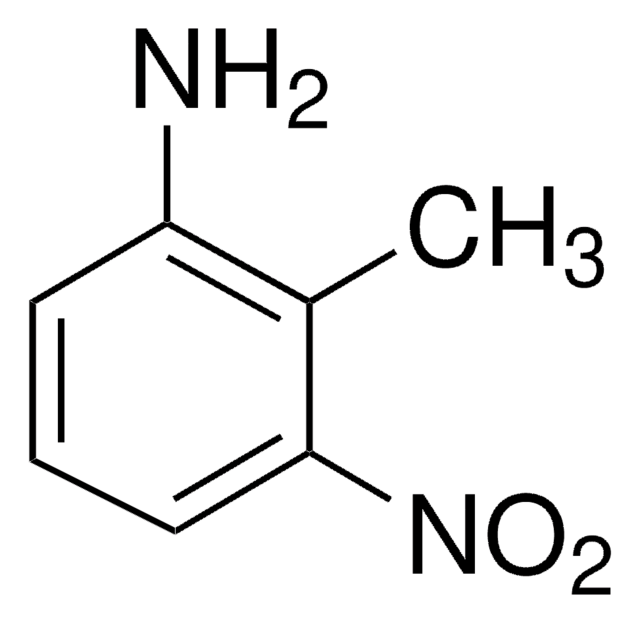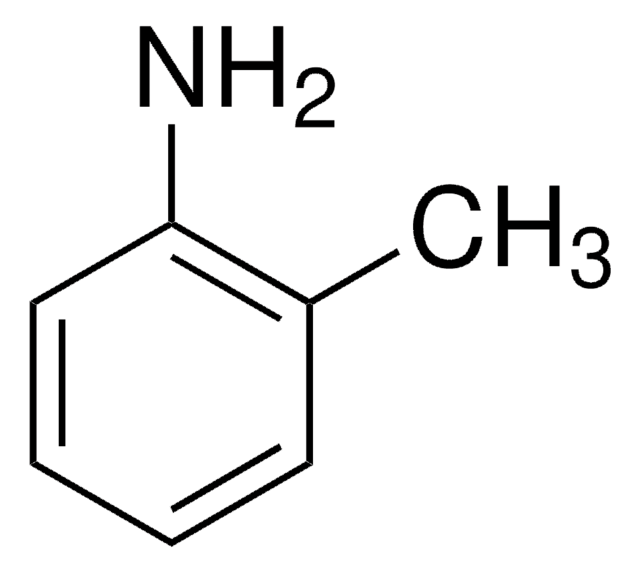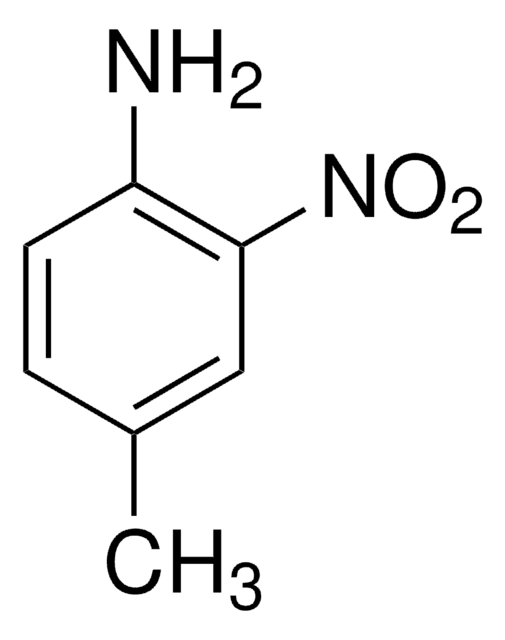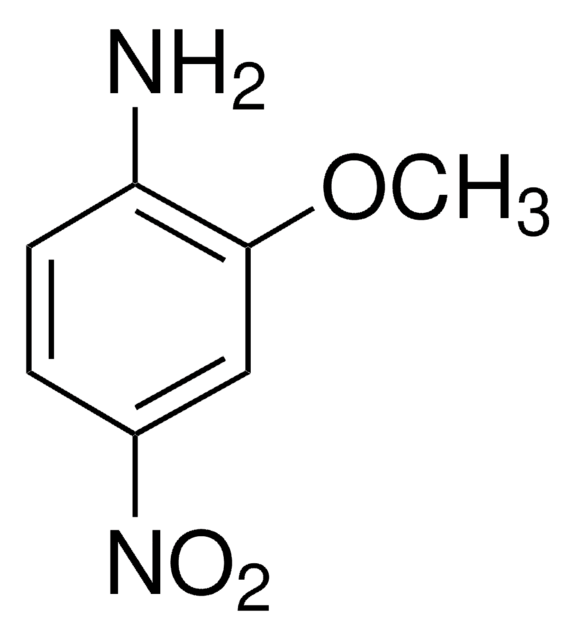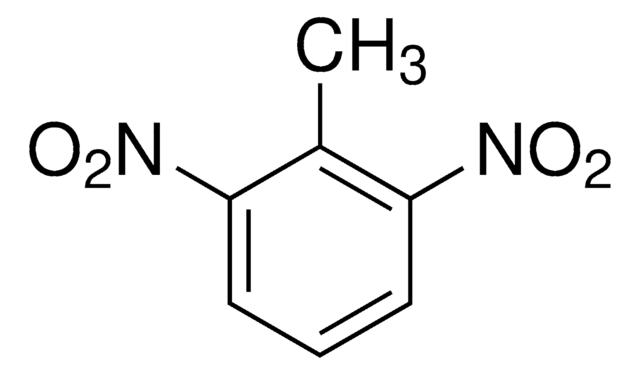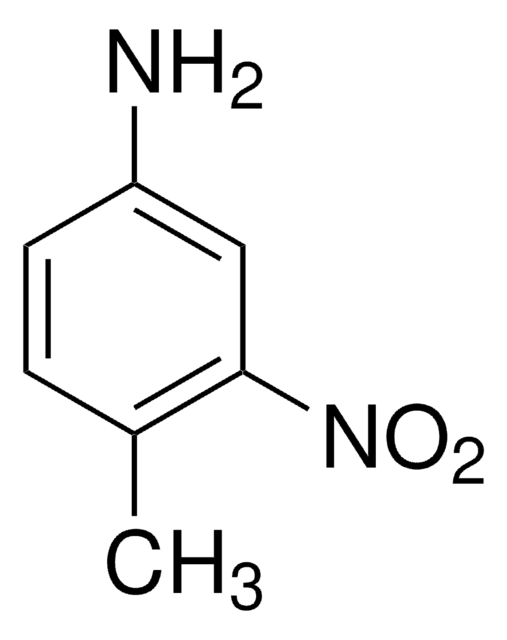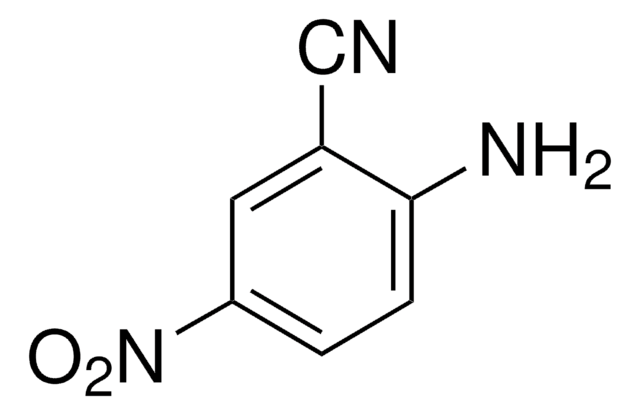402729
2-Methyl-5-nitroaniline
95%
Synonym(s):
2-Amino-4-nitrotoluene, 5-Nitro-o-toluidine
About This Item
Recommended Products
Assay
95%
form
powder
mp
103-106 °C (lit.)
functional group
nitro
SMILES string
Cc1ccc(cc1N)[N+]([O-])=O
InChI
1S/C7H8N2O2/c1-5-2-3-6(9(10)11)4-7(5)8/h2-4H,8H2,1H3
InChI key
DSBIJCMXAIKKKI-UHFFFAOYSA-N
Looking for similar products? Visit Product Comparison Guide
General description
Application
Signal Word
Danger
Hazard Statements
Precautionary Statements
Hazard Classifications
Acute Tox. 3 Dermal - Acute Tox. 3 Inhalation - Acute Tox. 3 Oral - Aquatic Chronic 3 - Carc. 2
Storage Class Code
6.1C - Combustible acute toxic Cat.3 / toxic compounds or compounds which causing chronic effects
WGK
WGK 3
Flash Point(F)
Not applicable
Flash Point(C)
Not applicable
Regulatory Information
Choose from one of the most recent versions:
Already Own This Product?
Find documentation for the products that you have recently purchased in the Document Library.
Our team of scientists has experience in all areas of research including Life Science, Material Science, Chemical Synthesis, Chromatography, Analytical and many others.
Contact Technical Service